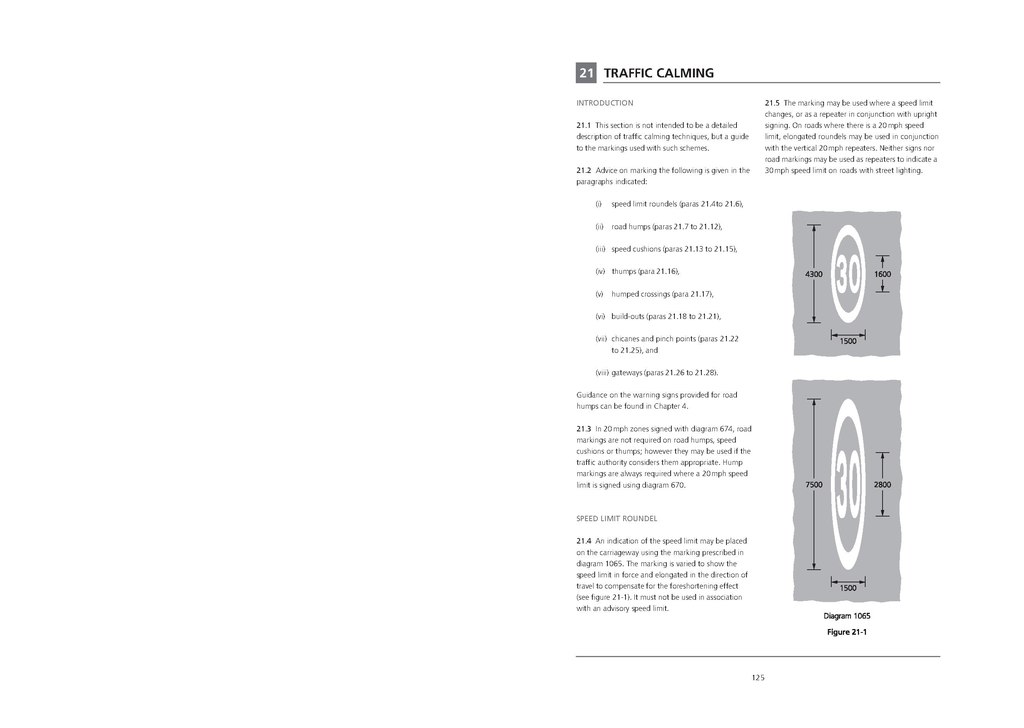21TRAFFIC CALMING
INTRODUCTION
21.1 This section is not intended to be a detailed description of traffic calming techniques, but a guide to the markings used with such schemes.
21.2 Advice on marking the following is given in the paragraphs indicated:
(i) speed limit roundels (paras 21.4 to 21.6),
(ii) road humps (paras 21.7 to 21.12),
(iii) speed cushions (paras 21.13 to 21.15),
(iv) thumps (para 21.16),
(v) humped crossings (para 21.17),
(vi) build-outs (paras 21.18 to 21.21),
(vii) chicanes and pinch points (paras 21.22 to 21.25), and
(viii) gateways (paras 21.26 to 21.28).
Guidance on the warning signs provided for road humps can be found in Chapter 4.
21.3 In 20 mph zones signed with diagram 674, road markings are not required on road humps, speed cushions or thumps; however they may be used if the traffic authority considers them appropriate. Hump markings are always required where a 20 mph speed limit is signed using diagram 670.

SPEED LIMIT ROUNDEL
21.4 An indication of the speed limit may be placed on the carriageway using the marking prescribed in diagram 1065. The marking is varied to show the speed limit in force and elongated in the direction of travel to compensate for the foreshortening effect (see figure 21-1). It must not be used in association with an advisory speed limit.
21.5 The marking may be used where a speed limit changes, or as a repeater in conjunction with upright signing. On roads where there is a 20 mph speed limit, elongated roundels may be used in conjunction with the vertical 20 mph repeaters. Neither signs nor road markings may be used as repeaters to indicate a 30 mph speed limit on roads with street lighting.
125
